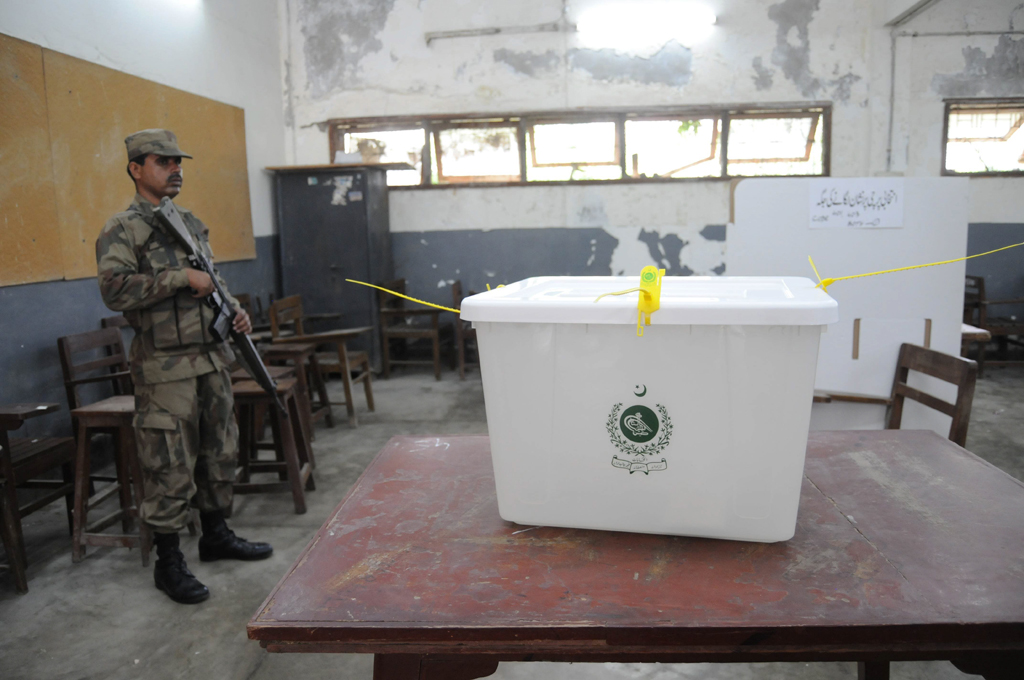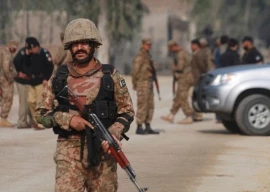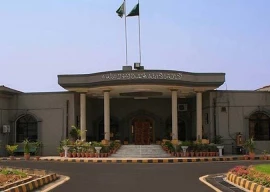
In press release issued on Friday, the network put forth its recommendations on the basis of findings compiled in its first detailed report titled “National Assembly Election Result Analysis” based on data gathered through citizens’ observation of General Elections 2013 and Election Commission of Pakistan’s (ECP) official documents.
Parallel Vote Tabulation (PVT), turnout trends, voting patterns and an in-depth analysis performance of political parties, are the key features of this report, which analyses the results of 266 out of 272 National Assembly constituencies.
FAFEN claimed that the issue of voter registration is of primary concern as the number of registered voters in general elections 2013 decreased in 100 NA constituencies compared to the general elections 2008 despite a considerable increase in the issuance of computerised national identity cards (CNICs). The under-registration of women voters continued to undermine universal suffrage, equal representation and their constitutionally-promised measures to enhance participation of women in national life. Of the 86.2 million voters, 43.6% were women compared to 80 million voters in 2008 with 44% women voters.
The finalisation of polling scheme by the ECP two weeks before the election day is a legal requirement and it cannot be changed by the returning officers (ROs) without prior permission of the ECP and a subsequent notification to that effect.
FAFEN found that the number of registered voters in 93 NA constituencies was recorded differently in final polling scheme, election results accruing an absolute discrepancy of 246,858 voters.
The distribution of constituencies showing voter discrepancy is significantly skewed across the regions with Punjab leading with 57 of the 93 NA constituencies showing a difference of voters between the final polling scheme and result Form XVII.
Khyber Pakhtunkhwa has 16 such constituencies, followed by Sindh (15), FATA (4) and ICT (1). Of the total of 246,858 votes in question, Punjab accounts for 233,225 (94.5%), Khyber-Pakhtunkhwa 6,462 (2.6%), Sindh 6,317 (2.6%), FATA 580 (0.2%) and ICT 274 (0.1%).
It is a serious question to the transparency of the elections and the ECP must look into this matter and ensure that the polling scheme is not changed after the stipulated time in order to protect the rights of the voters.
The result consolidation process which includes ballot count, vote count, consolidation and finalisation of results must be transparent for the fairness of the elections and the ECP must release election results along with Form XIV (Statement of the Count), Form XV (Ballot Paper Account), Form XVI (Consolidation of Statement of the Results of the Count) and Form XVII (Result of the Count) for electoral transparency.
The need is further reinforced by the fact that Form XVII published on the ECP website following the elections did not mention the number of rejected votes while the gazette notification of returned candidates did not record the number of registered voters.
The ECP should hold the election officials responsible for consolidation, finalization and certification of results with discrepancies and stern action should be taken against them so that such irregularities could be checked in the future elections.
The disproportionate and significant increase in the number of rejected votes emerged as one of the major discrepancy – the number increasing from 775,720 in 2002 to 973,694 in 2008 and further increasing to 1,502,717 in 2013 – an increase of 64% compared to 2008 elections.
The issue is critical not merely due to the numbers but also given the skewed distribution across constituencies and regions – the numbers range from 0 in NA-53 to 25,908 in NA-266.
From the results’ perspective, the issue is highlighted further by the fact that the number of rejected votes exceeds the margin of victory in 35 of the 266 constituencies analysed in this report.
The report’s analysis of turnout trends in the 266 constituencies highlights an encouraging trend while the overall turnout was recorded at 54.7% (+/- 0.03%), a substantial increase, vis-à-vis 2008, across urban as well as rural areas bodes well for the legitimacy and public trust in the democratic system.
The urban constituencies registered a substantial increase in turnout by 17%, followed by majority urban and predominantly urban constituencies seeing an increase of 13.2% and 12.8%, respectively. The predominantly rural constituencies witnessed an increase of 10.9% while majority rural constituencies showed an increase of 10.6%.
The 2013 elections witnessed returns for parties that varied across regions and provinces. While Sindh largely produced similar results – PPPP dominated rural Sindh while MQM urban areas, particularly Karachi – the other provinces underwent a significant change. PML-N and PTI were the largest beneficiaries of the change in Punjab and Khyber-Pakhtunkhwa while Pakhtun and Baloch nationalist parties made a strong comeback in Balochistan. Among the religious parties, JUI – while far from the overwhelming performance of MMA – secured significant votes and seats in both Khyber-Pukhtunkhwa and Balochistan.
For the 2013 elections, a total of 4,462 contestants vied for the 266 constituencies covered in this report. PTI fielded the most candidates, competing from 230 constituencies, followed by PPPP (227), PML-N (215) and MQM (207). Independent candidates constituted the largest group with 2,343 while other parties fielded a total of 1,240 candidates cumulatively.
From the perspective of gender representation and participation, the elections had the most female candidates (161) compared to the number of female candidates in the previous two elections – 75 and 61 candidates contested in 2008 and 2002 elections, respectively.
Most – 123 of the 161 – contested either as independent candidates (95) or from the platform of smaller/regional parties (28). Among the mainstream parties, PPPP awarded tickets to 15 females, followed by MQM, PML-N, PTI, and PML with 8, 7, 6 and 2 candidates respectively.
Of the 161 women contestants, only 6 were successful in winning their seats in the 2013 elections compared to 16 and 13 successful female candidates for the 2008 and 2002 general elections, respectively.
FAFEN recommends the Election Commission of Pakistan (ECP) to remove discrepancies in voter registration, finalisation of polling schemes and consolidation of results. These steps are very crucial for credible and transparent elections which enhance citizens' trust in democratic processes and can lead to accountable, transparent and efficient governance in the country.
COMMENTS (4)
Comments are moderated and generally will be posted if they are on-topic and not abusive.
For more information, please see our Comments FAQ

1725612926-0/Tribune-Pic-(8)1725612926-0-165x106.webp)















Nice post.Thanks for share
35 constituencies have unusually large number of rejected votes!!! Punctured Cricket Board!! Well explained!!!
Our PCB chief explained in 2008 how systematically rigging is done. Well in this case experience was well utilized. Rejecting an OK vote is as simple as stamping on the ballot paper for a second time on any other electoral symbol. And here you go!!! Vote Rejected...!!
Did I read that correctly? So the 2013 elections were the most mismanaged on record? PML-N came into power on a fake mandate. Even though PTI has accepted the election rigging, what they have not accepted is the lack of action to so that these same tactics cannot be employed in the next elections. We have 5 long years, next elections should be exemplary in transparency.